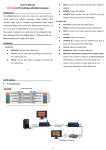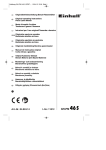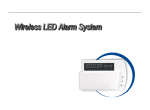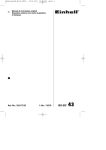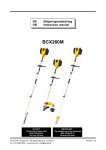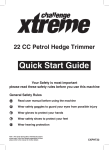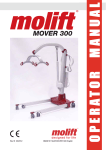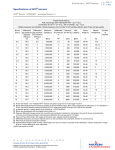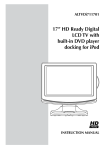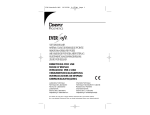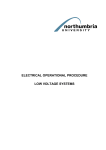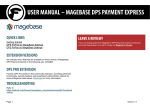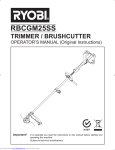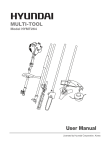Download SPL 26 Artikel-Nr.: 3436031
Transcript
SPL 26 Artikel-Nr.: 3436031 Petrol Leaf Vacuum Ident-Nr.: 11020 Komponenten / Ersatzteile Position Artikel-Nr. Beschreibung 2 343603001002 Choke Lever 3 343603001003 Primer Pump 7 343603001007 air colander cover 10 343603001010 Connector,Choke Lever 11 343603001011 Air colander Element 14 343603001014 Carburetor H619PA 23 343603001023 Lever 24 343603001024 Switch 31 343603001031 fan 35 343603001035 Fuel Filter Element 36 343603001036 Rubber stopper 37 343603001037 Inlet Pipe 220mm 38 343603001038 Pipe I 120mm 39 343603001039 Fuel Tank 40 343603001040 Chain für Benzintankdeckel 41 343603001041 sealed washer 42 343603001042 chain stpper 43 343603001043 inlet bracket 44 343603001044 air inlet 45 343603001045 Fuel Tank Cap 57 343603001057 Stop Switch Assy 6A 250V 58 343603001058 Collecting bag 59 343603001059 Choke 901 343603001901 motor 2-Takt; 25,4ccm; 0,65 kW/0,9PS 902 343603001902 Blower Pipe 903 343603001903 Pipe Connection assy. motor Artikel-Nr.: 343603001901 2-Takt; 25,4ccm; 0,65 kW/0,9PS Ident-Nr.: Komponenten / Ersatzteile Position Artikel-Nr. Beschreibung 63 343603001063 Spark plug RCJ6Y 66 343603001066 Gasket 67 343603001067 Piston ring 68 343603001068 Piston 69 343603001069 Piston pin 70 343603001070 Ring 79 343603001079 Starter pulley combo 90 343603001090 Starter assy 93 343603001093 Muffler assy 100 343603001100 Ignition coil mit Zündkerzenstecker Anleitung BG_P 1 9 14 1a 2 Helpline No. UK 0151 649 1500 / IRE 189 094 6244 14 Anleitung BG_PL_26_1_SPK7:_ 09.06.2009 7:47 Uhr Seite 3 1 2 3 4 5 6 16 14 1 7 8 13 10 12 15 9 16 21 20 19 18 14 17 11 1a 1b 14 16 14 19 Helpline No. UK 0151 649 1500 / IRE 189 094 6244 33 Anleitung BG_PL_26_1_SPK7:_ 09.06.2009 2 7:47 Uhr Seite 4 Anleitung BG_P 3a 4c B 11 3c 3b 6 A C 4a 2 3 4 4b 7b 13 12 44 Helpline No. UK 0151 649 1500 / IRE 189 094 6244 Anleitung BG_PL_26_1_SPK7:_ 09.06.2009 7:47 Uhr 4c 5 6 7a 7b 8a Seite 5 B 11 13 Helpline No. UK 0151 649 1500 / IRE 189 094 6244 55 Anleitung BG_PL_26_1_SPK7:_ 09.06.2009 7:47 Uhr Seite 6 Anleitung BG_P Table of con 8b 9 66 1. 2. 3. 4. 5. 6. 7. 8. 9. 1 2 3 4 5 6 7 8 9 10 Helpline No. UK 0151 649 1500 / IRE 189 094 6244 Safety instru Layout Intended us Technical d Before start Operation Cleaning, m Disposal an Troubleshoo Anleitung BG_PL_26_1_SPK7:_ 09.06.2009 7:47 Uhr Seite 15 Table of contents 1. 2. 3. 4. 5. 6. 7. 8. 9. GB Safety instructions Layout Intended use Technical data Before starting the equipment Operation Cleaning, maintenance, storage, transport and ordering of spare parts Disposal and recycling Troubleshooting Helpline No. UK 0151 649 1500 / IRE 189 094 6244 715 Anleitung BG_P 10. DO NOT op flammable l doors. An e 11. DO NOT W chains, unco so could cau being drawn hair and fas cap, helmet 12. DO NOT ref that is hot 13. Never allow Explanation of equipment (see 1 Read the op the blower v 2 Wear safety ear plugs to 3 Warning! Ha 4 Keep other 5 Warning! Ho 6 Fuel pump 7 Never work animals are 8 Never allow tube. 9 Sound powe 2000/14/EC 10 After the un to run for a 2. Layout (F 1. 2. 3. 4. 5. 6. 7. 8. 9. 10. 11. 12. 13. 14. 15. 16. 17. 18. 19. 20. 21. 8 Helpline No. UK 0151 649 1500 / IRE 189 094 6244 Front handle Ignition swit Throttle lock Throttle leve Spark plug b Rear handle Air filter hou Starter hand Tank cover Suction/Blow Debris bag Fuel pump ( Start flap (c Blower/Suct Blower hous Suction exte Carrying str Spark plug w Blower/Suct 2-stroke oil Petrol/oil mi Anleitung BG_PL_26_1_SPK7:_ 09.06.2009 7:47 Uhr 10. DO NOT operate your unit near or around flammable liquids or gases whether in or out of doors. An explosion and/or fire may result. 11. DO NOT WEAR loose clothing, scarfs, neck chains, unconfined long hair, and the like. Doing so could cause injury associated with objects being drawn into the rotating parts. Tie up long hair and fasten it, for example with a head scarf, cap, helmet, etc. 12. DO NOT refuel a running engine or an engine that is hot 13. Never allow children to use the blower vac. Explanation of the warning signs on the equipment (see Fig. 9) 1 Read the operating instructions before you use the blower vac. 2 Wear safety goggles to protect your eyes and ear plugs to protect yourself from the noise. 3 Warning! Hazard! 4 Keep other people away. 5 Warning! Hot surface 6 Fuel pump 7 Never work if people – especially children - or animals are in the danger area. 8 Never allow the blower to run without the blower tube. 9 Sound power level with EC Directive 2000/14/EC! 10 After the unit is switched off, the motor continues to run for a short while. Seite 17 3. Intended use The garden blower vac is designed to handle only foliage and garden refuse such as grass and small branches. Any other use is prohibited. The machine is to be used only for its prescribed purpose. Any other use is deemed to be a case of misuse. The user / operator and not the manufacturer will be liable for any damage or injuries of any kind caused as a result of this. Please note that our equipment has not been designed for use in commercial, trade or industrial applications. Our warranty will be voided if the machine is used in commercial, trade or industrial businesses or for equivalent purposes. 4. Technical data Engine type Engine power (max.) 2-stroke engine; air-cooled Displacement Max. engine speed Ignition: Weight (with empty tank) Tank capacity Spark plug 2. Layout (Fig. 1) Maximum air speed 1. 2. 3. 4. 5. 6. 7. 8. 9. 10. 11. 12. 13. 14. 15. 16. 17. 18. 19. 20. 21. Mulching ratio Front handle Ignition switch Throttle lock Throttle lever Spark plug boot Rear handle Air filter housing Starter handle Tank cover Suction/Blower lever Debris bag Fuel pump (primer) Start flap (choke) Blower/Suction tube Blower housing Suction extension Carrying strap Spark plug wrench Blower/Suction tube securing screw 2-stroke oil Petrol/oil mixing bottle GB Maximum delivery rate Debris bag volume 0.65 kW/0.9 hp 25,4 ccm 8000 rpm Electronic 7,5 kg 800 ml CMR7H 210 km/h 650 m3/h 10:1 55 l Vibration ahv 21.27 m/s2 Sound power level, LWA 111 dB(A) Sound pressure level, LpA Helpline No. UK 0151 649 1500 / IRE 189 094 6244 97 dB(A) 917 Anleitung BG_PL_26_1_SPK7:_ 09.06.2009 7:47 Uhr GB Seite 18 Anleitung BG_P 5. Before starting the equipment 6. Operation 6.3 STOPPING 5.1 Assembly Please note that the statutory regulations governing noise abatement may differ from town to town. Emergency Sto necessary to sto DEPRESS the s Blower tube assembly (Fig. 1a) Push the blower tube (14) into the blower housing and secure the blower tube using the securing screw (19). Tighten the screws (19). Suction extension assembly (Fig. 1b) When in suction mode, the suction extension (16) can be assembled. For this, insert the suction extension (16) into the blow pipe (14). Fitting the carrying strap (Fig. 2). Attach the carrying strap clips to the eyelets on the handle provided for them. Fitting the debris bag (3a – 3c) Push the debris bag (11) over the debris bag adapter and secure it with the Velcro fastening (A) above the ridge (B) on the suction tube. Attach the debris bag to the lug (C) on the blower/suction tube. 5.2 Fuel and oil Recommended fuels Use only a mixture of normal unleaded petrol and special 2-stroke engine oil. Mix the fuel mixture as indicated on the fuel mixing table. Please note: Do not use a fuel mixture which has been kept for longer than 90 days. Please note: Do not use 2-stroke oil with a recommended mixing ration of 100:1. If inadequate lubrication causes engine damage, the manufacturer’s engine warranty will be voided. Please note: Only use containers designed and approved for the purpose to transport and store fuel. Pour the correct quantities of petrol and 2-stroke oil into the mixing bottle (see scale printed on the bottle). Then shake the bottle well. 5.3 Fuel mixture table Mixing procedure: 40 parts petrol to 1 part oil Petrol 2-stroke oil 1 liter 25 ml 5 liters 125 ml 10 18 6.1 Cold start (4a-4c) Fill the tank with the required amount of oil/petrol mix. See “Fuel and oil”. 1. Place the equipment safely and securely on the ground. 2. Set the ON/OFF switch (2) to “I” (Fig. 4a) 3. Press the throttle lever (4) until it locks (Fig. 4a) 4. Press the fuel pump (12) (Fig. 4b) 10 times. 5. Set the choke lever (13) to “ ”. 6. Hold the equipment firmly by the handle. 7. Pull the starter cable out a short way until you feel resistance – it must be pulled evenly and quickly to start the engine. When the engine is running, set the choke lever to “ “. 8. Allow the engine to warm up for approx. 10 seconds. 9. Press the throttle lever lock. The throttle lever will jump back into its idling position. NOTE: If engine fails to start after repeated attempts, refer to Troubleshooting section. NOTE: Always pull starter rope straight out. Pulling starter at an angle will cause rope to rub against the eyelet. This friction will cause the rope to fray and wear more quickly. Always hold starter handle when rope retracts. Never allow rope to snap back from extended position. This could cause rope to snag or fray and also damage the starter assembly. 6.2 STARTING A WARM ENGINE (Engine has been stopped for no more than 15-20 minutes) 1. Pull starter rope again. Engine should start with ONE or TWO pulls. If engine fails to start after 6 pulls, repeat steps 2 through 6 (see Starting a cold engine). 2. If engine does not start, or starts and then stops after 5 rope pulls, follow procedure “STARTING A COLD ENGINE”. Helpline No. UK 0151 649 1500 / IRE 189 094 6244 Normal Stoppin push down the t back to the nom to idle speed. Th switch until the e 6.4 Switching b (Fig. 1 / Item 10 You can either b To activate lever (10) to To activate lever (10) to 6.5 BLOWER O Your blower is d patios, walkway hard to reach ar WARNING: Bec American Nation approved shield operating blowe Before using yo in your User Ma of the unit. Thes your protection. CAUTION: Hold not damage clot DO NOT operat animals in the im 30 feet (9 meter people or anima We recommend operating blowe Stand away from easily allow you debris. Never bl To control veloc operated at any Experience with amount of airflo Anleitung BG_PL_26_1_SPK7:_ 09.06.2009 7:47 Uhr 6.3 STOPPING THE ENGINE tions governing n to town. Emergency Stopping Procedure. When it is necessary to stop blower engine immediately, DEPRESS the switch to stop. t of oil/petrol Normal Stopping Method. For normal stopping, push down the throttle lock, the throttle trigger will back to the nomal position and allow engine to return to idle speed. Then DEPRESS and HOLD the “0” switch until the engine stops completely. securely on the (Fig. 4a) locks (Fig. 4a) b) 10 times. handle. way until you d evenly and n the engine is “. approx. 10 throttle lever will peated attempts, ght out. Pulling rub against the pe to fray and er handle when ap back from rope to snag or embly. Engine has n 15-20 hould start with s to start after 6 see Starting a and then stops re “STARTING 6.4 Switching between suction and blower mode (Fig. 1 / Item 10) You can either blow or suck with this equipment. To activate blower mode slide the suction/blower lever (10) to the right To activate suction mode slide the suction/blower lever (10) to the front. 6.5 BLOWER OPERATIONS (FIG. 5) Your blower is designed to easily remove debris from patios, walkways, lawns, bushes, etc., and many hard to reach areas where debris may accumulate. WARNING: Because of flying debris, always wear American National Standards Institute (A.N.S.I.) approved shielded safety glasses or face shield when operating blower. Before using your blower, review Safety Precautions in your User Manual, and all regulations for operation of the unit. These precautions and regulations are for your protection. CAUTION: Hold the blower so that hot exhaust does not damage clothing and is not inhaled by operator. DO NOT operate the blower with other people or animals in the immediate vicinity. Allow a minimum of 30 feet (9 meters) between operator and other people or animals. We recommend that a face mask be worn when operating blower in dusty areas. Stand away from the debris, at a distance that will easily allow you to control the direction of blown debris. Never blow debris in direction of bystanders. To control velocity of airstream, blower can be operated at any speed between idle and full throttle. Experience with the unit will help you determine the amount of airflow necessary for each application. Seite 19 GB 6.6 VACUUM OPERATIONS WARNING: NEVER OPERATE VACUUM WITHOUT VACUUM BAG PROPERLY ATTACHED, AS FLYING DEBRIS COULD CAUSE INJURY TO OPERATOR AND BYSTANDERS. ALWAYS MAKE SURE VACUUM BAG ZIPPER IS CLOSED BEFORE OPERATING UNIT. Do not vacuum hot or burning materials (e.g. hot ash, glowin gcigarettes) from outdoor fireplaces or barbecue pits. always wait for these materials to be cool enough. Do not vacuum lighted smoking material such as discarded cigars or cigarettes. Do not operate unit near open flame. CAUTION: This unit is designed to vacuum up debris such as leaves, small bits of paper, small twigs, weeds, grass clippings, etc. Do not use this unit for any other purpose. Do not attempt to vacuum rocks, broken glass, bottles, tin cans or other such objects. Damage to impeller and unit as well as operator injury could result. If vacuum tube is level with power unit horizontal, rocks or large objects may be drawn into tube, damaging the impeller. To Operate Vacuum: 1. Follow correct starting procedures as explained in this manual. 2. Leave the motor running at idle speed. Attach the shoulder strap so that it lies over the left shoulder. CAUTION: Do not allow shoulder harness to cover, block, or come in contact with exhaust outlet during operation. The muffler generates heat and could burn, melt, or damage harness strap. 3. Hold the appliance with the right hand on the upper handle and with the left hand on the front handle (Fig. 6). 4. For suction, swing the appliance from side to side. CAUTION: To avoid clogging vacuum tube. DO NOT FORCE OR PLACE SUCTION TUBE INTO A PILE OF DEBRIS. VACUUM TUBE CLOGGING To Unclog Vacuum Tube: Turn engine “OFF”. Promptly compress vacuum bag while it is still inflated, expelling air out of the suction tube. This reverse airflow is usually sufficient to dislodge most obstructions. If the obstruction cannot be cleared by compressing vacuum bag, follow this procedure: Remove and inspect vacuum tubes. Carefully clean out nozzle. Reinstall vacuum tubes. Helpline No. UK 0151 649 1500 / IRE 189 094 6244 11 19 Anleitung BG_PL_26_1_SPK7:_ 09.06.2009 7:47 Uhr GB 7. Cleaning, maintenance, storage, transport and ordering of spare parts Always switch off the equipment and pull out the spark boot plug before carrying out any maintenance work. 7.1 Cleaning Keep all safety devices, air vents and the motor housing free of dirt and dust as far as possible. Wipe the equipment with a clean cloth or blow it with compressed air at low pressure. We recommend that you clean the device immediately each time you have finished using it. Clean the equipment regularly with a moist cloth and some soft soap. Do not use cleaning agents or solvents; these could attack the plastic parts of the equipment. Ensure that no water can seep into the device. VACUUM BAG CLEANING A dirty bag will obstruct airflow, thereby reducing vacuum efficiency. To Clean Bag: 1. Detach vacuum bag from unit. 2. Open zipper and remove contents. 3. Turn bag INSIDE OUT and shake vigorously. This procedure should be performed on a regular basis. 4. Turn bag RIGHT SIDE OUT, close zipper and attach to unit. NOTE: If vacuum bag is unusually dirty, it should be washed by hand in warm water with a mild detergent. Rinse thoroughly. Let dry before using. 7.2 Maintenance of the air filter (Fig. 7a-7b) Soiled air filters reduce the engine output by supply too little air to the carburetor. Regular checks are therefore essential. The air filter should be checked after every 25 hours of use and cleaned if necessary. If the air contains a lot of dust, the air filter should be checked more frequently. 1. Remove the air filter cover (Fig. 7a) 2. Remove the filter element (Fig. 7b) 3. Clean the filter element by tapping it or blowing it. 4. Assemble in reverse order. Please note: Never clean the air filter with petrol or inflammable solvents. 12 20 Seite 20 Maintenance of the spark plug (Fig. 8a-8b) Spark plug gap = 0.6 mm. Tighten the spark plug with a torque of 12-15 Nm. Check the spark plug for dirt and grime after 10 hours of operation and if necessary clean it with a copper wire brush. Thereafter service the spark plug after every 50 hours of operation. 1. Pull off the spark plug boot (Fig. 8a) by twisting. 2. Remove the spark plug (Fig. 8b) with the supplied spark plug wrench. 3. Assemble in reverse order. 7.3 Storage Please note: If you fail to follow these instructions correctly, deposits may form on the interior of the carburetor which may result in the engine being more difficult to start or the machine suffering permanent damage. 1. Carry out all the maintenance work. 2. Drain the fuel out of the tank (use a conventional plastic petrol pump from a DIY store for this purpose). 3. When the fuel has been drained, start the engine. 4. Allow the engine to run at idling speed until it stops. This will clean the remainder of the fuel out of the carburetor. 5. Leave the machine to cool (approx. 5 minutes). 6. Remove the spark plug. 7. Place a teaspoon full of 2-stroke engine oil into the combustion chamber. Pull the starter cable several times carefully to wet the internal components with the oil. Fit the spark plug again. 8. Clean the exterior housing of the machine. 9. Store the machine in a cold, dry place where it is out of the reach of ignition sources and inflammable substances. Fertilizers and other chemical garden products often contain substances that accelerate the rate of corrosion of metals. Do not store the machine on or near fertilizers or other chemicals. 7.4 Restarting 1. Remove the spark plug. 2. Pull the starter cable several times to clean the oil residue out of the combustion chamber. 3. Clean the spark plug contacts or fit a new spark plug. 4. Fill the tank. See the section entitled Fuel and oil. 5. Complete steps 1-7 described under the point entitled “Starting the engine from cold”. Helpline No. UK 0151 649 1500 / IRE 189 094 6244 g. 8a-8b) e spark plug me after 10 clean it with a e the spark plug 8a) by twisting. with the se instructions nterior of the ngine being more ing permanent ork. e a conventional tore for this start the speed until it der of the fuel ox. 5 minutes). engine oil into e starter cable e internal spark plug again. machine. place where it is es and ers and other contain ate of corrosion ine on or near es to clean the chamber. fit a new spark tled Fuel and oil. nder the point m cold”. Helpline No. UK 0151 649 1500 / IRE 189 094 6244 13 Anleitung BG_PL_26_1_SPK7:_ 09.06.2009 7:47 Uhr Seite 22 GB 9. Troubleshooting Fault Possible cause The machine does not start. The machine starts but does not develop its full output. The engine does not run smoothly Engine smokes excessively 14 22 Troubleshooting Correct starting procedure not followed. Follow the instructions for starting. Sooted or damp spark plug Clean the spark plug or replace it with a new one. Incorrect carburetor setting Contact an authorized customer service outlet or send the machine to ISC-GmbH. Incorrect choke lever setting Set choke lever to “ ” Soiled air filter Clean the air filter Incorrect carburetor setting Contact an authorized customer service outlet or send the machine to ISC-GmbH. Incorrect electrode gap on the spark plug Clean the spark plug and adjust the electrode gap or fit a new spark plug. Incorrect carburetor setting Contact an authorized customer service outlet or send the machine to ISC-GmbH. Incorrect fuel mix Use the correct fuel mix (see fuel mixing table) Incorrect carburetor setting Contact an authorized customer service outlet or send the machine to ISC-GmbH. Helpline No. UK 0151 649 1500 / IRE 189 094 6244 ooting ons for starting. g or replace it ed customer nd the machine ” ed customer nd the machine g and adjust r fit a new spark ed customer nd the machine mix (see fuel ed customer nd the machine Helpline No. UK 0151 649 1500 / IRE 189 094 6244 15 16 Helpline No. UK 0151 649 1500 / IRE 189 094 6244 Helpline No. UK 0151 649 1500 / IRE 189 094 6244 17 Anleitung SGT_ PRODUCT GUARANTEE This product is guaranteed against manufacturing defects for a period of 2 Year This product is guaranteed for twenty four months from the date of original purchase. Any defects that arises due to faulty materials or workmanship will either be replaced, refunded or repaired free of charge where possible during this period by the dealer from whom you purchased the unit. The guarantee is subject to the following provisions: - he guarantee does not cover accidental damage, misuse, cabinet parts, knobs or T consumable items. - he product must be correctly installed and operated in accordance with the instructions T contained in this manual. - It must be used solely for domestic purpose. - he guarantee will be rendered invalided if the product is re-sold or has been damaged T by inexpert repair. - S pecifications are subject to change without notice. - The manufacture disclaims any liability for the incidental or consequential damages. - The guarantee is in addition to, and does not diminish your statutory or legal rights. Guarantor: Homebase Ltd AVERBURY MILTON KEYNES, MK9 2NW TEL: 0845 0778888 www.homebase.co.uk For technical support and assistance or requests for spare parts and accessories please contact 0151 649 1500 between the following hours: Mon - Thursday 8.45am - 5.00pm Friday 8.45am - 3.15pm 18 Helpline No. UK 0151 649 1500 / IRE 189 094 6244 Anleitung SGT_26:Anleitung SGT_26 31.10.2006 13:33 Uhr Seite 21 od of ase. Any refunded hom you bs or nstructions damaged mages. ights. essories Helpline No. UK 0151 649 1500 / IRE 189 094 6244 21 19 Unit 5 Morpeth Wharf Twelve Quays Birkenhead Wirral CH41 1LF Contact Numbers: Tel 0151 649 1500 Fax 0151 649 1501


























